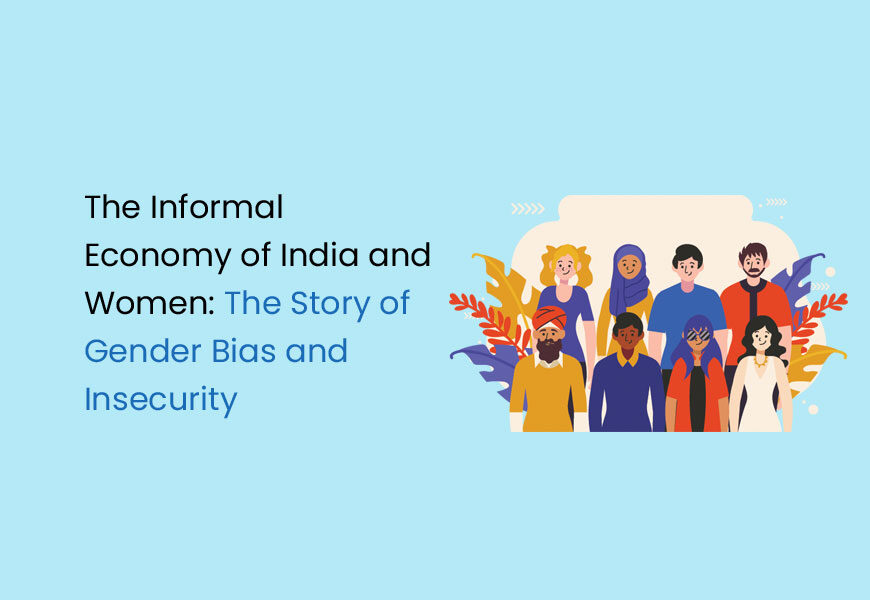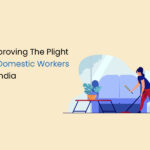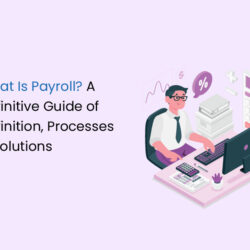India’s overall Women’s Economic Participation and Opportunities ranking is 143 out of 146 countries, a record low, as per the World Economic Forum (WEF) Gender Gap Report 2022. India’s female labour force participation rate is also among the lowest at 19%.
93% of India’s entire workforce is engaged in informal work. But the informalization of women workers is more concentrated. Around 91% of all women who are in paid employment work in the informal sector.
Why is this a problem and what are the challenges faced by women in informal employment? We will explore these questions and more in the article.
Women and the Informal Economy of India
Women workers make up close to 22% of the total workforce and around 23% of the total informal workforce. However, a large proportion of women who are employed in paid jobs are involved in informal employment. In absolute numbers, out of the 105 million Indian women in paid employment 96 million women are in the informal sectors.
The gender dimensions of the informal economy in India differ greatly in terms of age, level of education, sector (rural/ urban), status of employment (self-employed, contributing family workers, casual workers, etc.) and socio-economic and cultural characteristics.
- 93.1% of rural women are in informal employment as opposed to 77.2% of urban women.
- Almost all older people (aged 65+) are employed in the informal sector.
- The percentage of elderly women in informal employment is substantially higher than elderly men.
- Women belonging to socio-culturally oppressed castes, tribes and minority religions have a higher proportion of women employed informally.
- Among the lowest consumption classes, 9 out 10 people are in informal employment while only 6 out 10 people are in informal employment in the highest consumption classes.
Informal workers are divided into 5 key categories – own account workers, employers, casual labourers, contributing family workers and wage employees. 48% of women in the informal sector are own account workers who are self-employed and don’t hire employees for running their enterprises. They may themselves be unpaid workers in a family enterprise/ work or they may run their own business with unpaid family workers or no workers.
Why Are There So Many Women in The Informal Sector?
Poverty, poor educational attainment, the lack of employment opportunities and the structural barriers and intersectionality of patriarchal oppression are key contributing factors to the prevalent gender dimensions of informality in India.
Poverty and the lack of employment opportunities are key push factors, forcing women to take up informal jobs which are more readily available. For instance, women get employment more easily as domestic workers in the urban settings and casual/ seasonal agricultural workers in the rural areas. In the absence of other better paying work opportunities, they choose informal employment.
Globally, an inverse relationship between the level of educational attainment and informality has been observed. That is why women with tertiary education are less likely to be informal workers when compared to women with primary or no education.
In India, women are often relegated to domesticity owing to prevalent socio-cultural norms and especially so after marriage. Patriarchal norms also restrict their mobility and decision-making abilities. They shoulder the disproportionately high burden of domestic work and care work.
In fact, ILO data suggests that 21% of women who were initially in paid employment exited the workforce over the next 7 years. The top reasons for their exit from the labour market is attributed to childbirth or caring for an ailing/ elderly family.
These factors together force them to take up jobs that are flexible and/or closer to home to help them balance their unpaid household work and care work along with paid work. For instance, many women take up jobs as rag pickers or domestic workers because it is the only available option that is closer to home and offers them flexibility in choosing timings and hours of work.
The Plight of Women in The Informal Sector
One of the key outcomes of choosing informal employment such as domestic work, rag pickers, construction workers, casual labourers, own account workers or unpaid family workers is that it tends to invisibilise their economic contributions.
When their work is invisible, it becomes difficult to account for them, make and implement policies that reach them and so on. They are left vulnerable to a range of risks including poor wages, poor working conditions, no social security, abuse, violence and gender-based disparities, among others.
For instance, 21% of women are contributing family workers, 4 times higher than the proportion of men who work as contributing family workers. This is a concerning statistic since these women seldom get paid for working in family enterprises or farms. They are hard to reach through social security benefits, government policies or labour regulations.
Challenges Faced by Women in The Informal Sector
Job Insecurity
One of the key challenges faced by women in the informal sector is that they have little to no job security. Unlike formal employment, informal workers don’t enter into contracts with employers and have no proper procedures for hiring and firing. Employers hire more or less workers on a need basis.
For instance, the impact of the pandemic was disproportionately high on women’s employment. 3 out of 5 women in informal employment lost their livelihood during the pandemic. While 61% men remained employed during the pandemic, only 19% of women stayed employed during the pandemic. 47% of women faced permanent job loss during the global pandemic.
Lack Of Social Security Benefits
The other key challenge faced by women in informal employment is the lack of social security benefits. Since India doesn’t have a universal social security scheme, millions of informal women workers don’t have the safety and financial security that social security provides.
Social security typically includes access to insurance, healthcare benefits, retirement benefits, pensions and maternity benefits. Without social security benefits, informal women workers will have higher out-of-pocket expenses for healthcare, hospitalization, maternity, disablement and so on for themselves and family members. This eats into their savings and restricts their ability to spend on other critical expenses like education, house repairs and so on.
Without social security benefits, any major socio-economic eventuality, temporary/ permanent disablement, a major medical expense or natural disaster will push them deeper into poverty.
The Long-Term Impact of The Lack of Social Protection For Women
Without medical insurance and healthcare benefits, women’s health is worst affected. For instance, they may not even have access to proper and timely medical care without health insurance. Due to the out-of-pocket expenses involved, women tend not to take proper treatment. This will have serious long-term implications on their overall health and well-being.
Without retirement benefits and pensions and in the absence of savings, more elderly women live in poverty. Why? Because they will be forced to work to make ends meet even when their age and health don’t permit it.
Wage Gap Is Stark
The wage gap between formal and informal work and between men and women is stark. For instance, in the garment sector in India, most men are employed full-time and receive regular monthly wages while more women tend to be employed as piece-rate workers. The piece-rates are lower and come with no social security or other benefits that formal employment offers.
Poor Work Conditions
Another big challenge faced by women in informal employment is the poor working conditions. In the absence of proper regulatory frameworks, the inability to unionize, poor negotiating capabilities and the invisible nature of work, women informal workers end up working in dismal, unsafe and unsanitary conditions.
For instance, most women in informal employment don’t have access to proper toilets, which affects their health and well-being.
Abuse and Violence
Women working in the informal sector are often exposed to higher levels of abuse, violence and harassment. Their invisibility in the workforce, the lack of legal provisions for setting up anti-sexual harassment committees and the lack of unionization leave them with few to no avenues to report harassment/ abuse and seek protection.
As per one statistic, the 8-percentage point decline in female labour force participation rate coincides with the overall rate of crimes against women and girls. This figure tripled to 57.9% between 2011-12 and 2017-18. A closer look at states with the lowest female labour force participation rates during this time period reinstates the fact that violence and crimes against women have a strong connection to their labour force participation.
Policy Gaps
There is no denying that there are fewer policies that address the challenges faced by women in informal employment. The invisible nature of their work causes several challenges in identifying the gaps and bringing legislations to improve the plight of women workers in the informal sector.
The Way Forward: Addressing Some of These Gender Biases and Insecurities in The Informal Sector
There is an immediate need to expand employment opportunities, enhance gender-sensitive infrastructure, address policy gaps and so on to improve the plight of women in the informal sector. While these are long-term measures that need to be taken, we need to explore ways to formalize their informal work.
Providing social security benefits to informal workers is an important first step in formalizing work for the millions of informal workers of the country. Social security benefits marginally increase the wages paid by employers but have a multiplier effect on the lives and standards of living of the informal women workers and their families.
Social security benefits provide a cushion for informal women workers in the face of socio-economic eventualities, disablement, medical emergencies, natural disasters and other unforeseen contingencies. It not only ensures access to retirement income and proper healthcare but reduces their out-of-pocket expenses. This way, they can save more and divert their income to other pressing personal needs like fixing their roof or sending their children to coaching classes.
Do you employ women workers for informal work as domestic workers, helpers, casual or contract workers? Want to improve their plight by providing social security benefits? Leverage the TankhaPay app to get started now.
Or
Download the TankhaPay app now
![]()
![]()





















